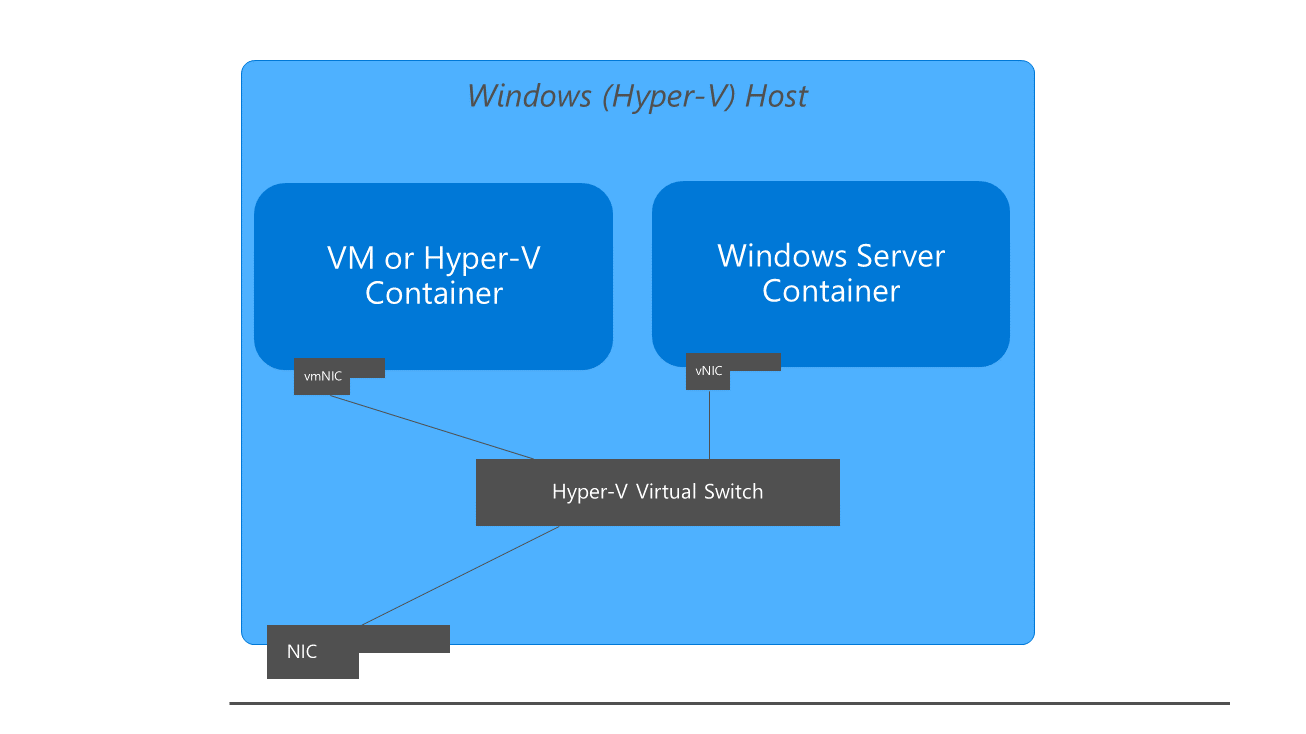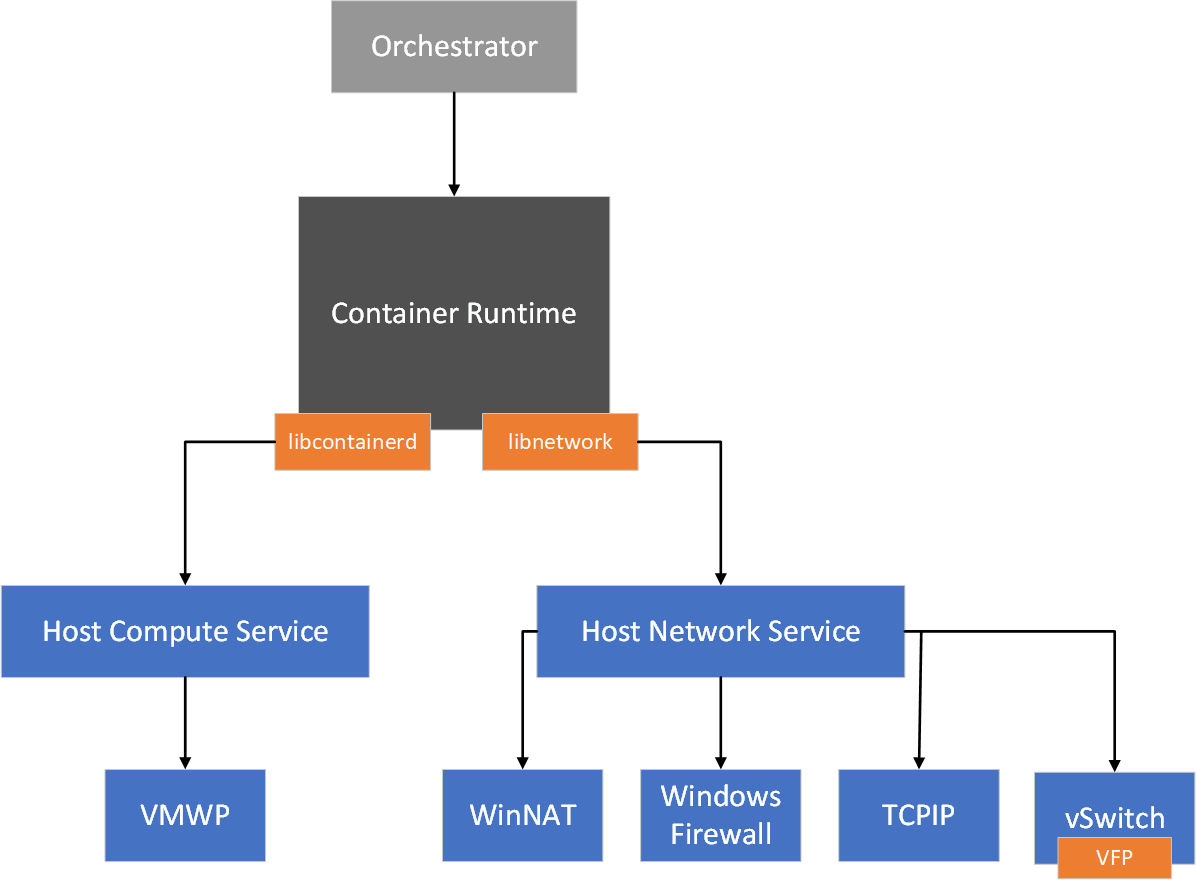Windows container networking
Applies to: Windows Server 2025, Windows Server 2022, Windows Server 2019, Windows Server 2016
Important
Please reference Docker Container Networking for general Docker networking commands, options, and syntax. With the exception of any cases described in unsupported features and network options, all Docker networking commands are supported on Windows with the same syntax as on Linux. However, the Windows and Linux network stacks are different, and as such you will find that some Linux network commands (for example, ifconfig) are not supported on Windows.
Basic networking architecture
This topic provides an overview of how Docker creates and manages host networks on Windows. Windows containers function similarly to virtual machines in regards to networking. Each container has a virtual network adapter (vNIC) which is connected to a Hyper-V virtual switch (vSwitch). Windows supports five different networking drivers or modes which can be created through Docker: nat, overlay, transparent, l2bridge, and l2tunnel. Depending on your physical network infrastructure and single- vs multi-host networking requirements, you should choose the network driver which best suits your needs.

The first time Docker Engine runs, it creates a default NAT network, 'nat', which uses an internal vSwitch and a Windows component named WinNAT. If there are any pre-existing external vSwitches on the host which were created through PowerShell or Hyper-V Manager, they will also be available to Docker using the transparent network driver and can be seen when you run the docker network ls command.

- An internal vSwitch is one that isn't directly connected to a network adapter on the container host.
- An external vSwitch is one that is directly connected to a network adapter on the container host.

The 'nat' network is the default network for containers running on Windows. Any containers that are run on Windows without any flags or arguments to implement specific network configurations will be attached to the default 'nat' network, and automatically assigned an IP address from the 'nat' network's internal prefix IP range. The default internal IP prefix used for 'nat' is 172.16.0.0/16.
Container Network Management with Host Network Service
The Host Networking Service (HNS) and the Host Compute Service (HCS) work together to create containers and attach endpoints to a network. You can interact with HNS through the HNS Powershell Helper Module.
Network Creation
- HNS creates a Hyper-V virtual switch for each network
- HNS creates NAT and IP pools as required
Endpoint Creation
- HNS creates network namespace per container endpoint
- HNS/HCS places v(m)NIC inside network namespace
- HNS creates (vSwitch) ports
- HNS assigns IP address, DNS information, routes, etc. (subject to networking mode) to the endpoint
Policy Creation
- For the default network address translation (NAT) network, HNS creates the WinNAT port forwarding rules and mappings with the corresponding Windows Firewall ALLOW rules.
- For all other networks, HNS utilizes the Virtual Filtering Platform (VFP) for policy creation which includes load balancing, ACLs, and encapsulation. For more information on HNS APIs and the schema, see Host Compute Network (HCN) service API for VMs and containers.

Unsupported features and network options
The following networking options are currently NOT supported on Windows:
- From Windows Server 2022 onwards, Windows containers have the following support for IPv6 networking:
- Containers attached to l2bridge networks support the IPv6 stack.
- Containers attached to transparent networks support communication using IPv6 with self assigned IP addresses, but do not have support for HNS provided IP address assignment and other network services such as Load Balancing and ACLs.
- Windows containers attached to NAT and overlay networks do not support communicating over the IPv6 stack.
- Encrypted container communication via IPsec.
- Host mode networking.
- Networking on virtualized Azure infrastructure via the transparent network driver.
| Command | Unsupported option |
|---|---|
docker run |
--ip6, --dns-option |
docker network create |
--aux-address, --internal, --ip-range, --ipam-driver, --ipam-opt, --ipv6, --opt encrypted |